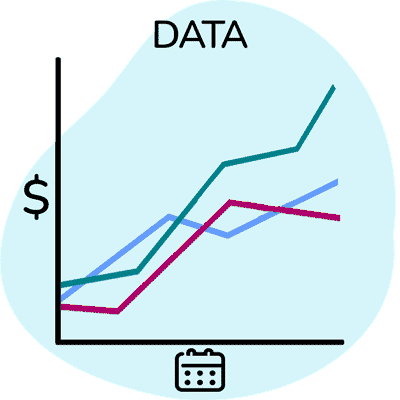Physician Shortages and Workers' Comp: Conflicting Data

The Workers’ Compensation Research Institute (WCRI) recently released an in-depth study examining the impact of the national provider shortage on workers' compensation. The study specifically focused on the use of non-physician providers (nurse practitioners and physician assistants) for Evaluation and Management (E&M) treatment provided to injured workers.
Using workers’ comp E&M data from 2013-2022, the study asserts an increasing reliance on non-physicians, which the WCRI attributes to a shrinking physician pool.
However, daisyData from 2019 to 2024 indicate a much smaller and relatively steady percentage of physician assistants (PAs) and nurse practitioners (NPs) providing E&M treatment than the WCRI data indicate.
Below is an analysis that raises critical questions about how data sources impact conclusions. While the WCRI suggests a structural shift toward non-physician providers, daisyData’s more recent findings show physicians overwhelmingly conduct E&M in workers' compensation cases.
There is no such thing as too much data in stakeholders’ efforts to study and improve workers’ compensation outcomes.
Unfortunately, workers’ compensation has consistently and almost exclusively relied on payer-derived data.
daisyData 2019 - 2024: Non-Physician Billing
Below, our voluminous daisyData offers a more recent window into the physician/non-physician divide in workers’ comp treatment than the WCRI data.
Table 1 aggregates the total count of workers’ compensation bills submitted by daisyBill clients between 2019 and 2024 that reported a new E&M treatment. Based on the E&M CPT codes reported on bills, daisyBill identifies the first instance of a provider treating an injured worker.
Table 2 aggregates the total count of workers’ compensation bills submitted by daisyBill clients between 2019 and 2024 that reported E&M treatment for an existing patient. Based on the E&M CPT codes, daisyBill identifies subsequent instances of a provider treating an injured worker.
Key Observations: Physician % of Grand Total
- Physicians consistently deliver most E&M treatments, attending approximately 80% of total treatments over six years.
- The highest physician percentage was in 2023 (84% and 85%), marking a peak in physician-led treatments.
- The lowest percentage was in 2021 (77% and 81%), suggesting a temporary shift in treatment distribution among provider types, perhaps due to COVID-19.
- Despite some variation, the physician share remains relatively stable.
- The 2024 percentage (81% and 82%) aligns with the six-year average (80% and 82%), reinforcing the long-term trend of physicians as the primary providers of E&M treatments.
These data indicate that physicians remain the dominant providers in workers’ compensation cases.
Table 1. NEW Evaluation & Management (E&M) Treatment by Date of Service Year
Provider Type |
2019 |
2020 |
2021 |
2022 |
2023 |
2024 |
Grand Total |
Non-Physician Other |
3,559 |
3,551 |
3155 |
2714 |
2713 |
4648 |
20,340 |
Nurse Practitioner |
2,497 |
5,855 |
9,900 |
7,904 |
8,932 |
11,455 |
46,543 |
Physician |
75,008 |
96,672 |
112,152 |
111,520 |
131,038 |
141,347 |
667,737 |
Physician Assistant |
11,269 |
15,308 |
20,389 |
18,211 |
13,138 |
18,108 |
96,423 |
Grand Total |
92,333 |
121,386 |
145,596 |
140,349 |
155,821 |
175,558 |
831,043 |
Physician % of Grand Total |
81% |
80% |
77% |
79% |
84% |
81% |
80% |
Table 2. EXISTING Evaluation & Management (E&M) Treatment by Date of Service Year
Provider Type |
2019 |
2020 |
2021 |
2022 |
2023 |
2024 |
Grand Total |
Non-Physician Other |
17,156 |
16,003 |
14,110 |
16,016 |
14,657 |
21,330 |
99,272 |
Nurse Practitioner |
19,907 |
25,761 |
37,003 |
32,793 |
40,307 |
56,896 |
212,667 |
Physician |
384,416 |
476,829 |
567,252 |
619,044 |
684,175 |
765,742 |
3,497,458 |
Physician Assistant |
48,805 |
58,903 |
82,844 |
88,124 |
63,352 |
90,445 |
432,473 |
Grand Total |
470,284 |
577,496 |
701,209 |
755,977 |
802,491 |
934,413 |
4,241,870 |
Physician % of Grand Total |
82% |
83% |
81% |
82% |
85% |
82% |
82% |
Note: To determine the provider type, daisyBill used the taxonomy code of the rendering provider reported on each bill.
WCRI Data 2013 - 2022: Shift Away From Physicians
In January 2025, the WCRI issued Changes in the Medical Workforce and Impact on Claims, a study of data from 2013 to 2022 that explores how the shrinking pool of providers (relative to the growing population) impacts workers’ comp claims.
The study aims to describe “...how shifts in the supply and composition of the medical workforce impact various outcomes for workers’ compensation patients.”
Using Evaluation and Management (E&M) treatment as the unit of measurement, the WCRI asserts that physician assistants and nurse practitioners are increasingly providing E&M treatment to injured workers.
In conflict with the daisyData E&M analysis above, the WCRI data below assert that the percentage of physicians conducting E&M visits decreased significantly from 2013 through 2022, while the percentages of PAs and NPs handling injured worker E&M rose steadily.
According to the WCRI, “Multiple measures in Figure 4.1 show a consistent finding about the changing nature of the types of providers treating workers’ compensation patients–nurse practitioners and physician assistants are increasingly more likely to be involved. In contrast, physicians are involved in a decreasing share of office visits.”
WCRI and daisyData Differences
While the WCRI asserts a long-term decline in physician involvement, with PAs and NPs taking on more E&M treatments, daisyData affirms that physicians remain the primary providers, with only minimal growth in non-physician provider involvement over recent years.
All verifiable data from reliable sources is essential in identifying trends and ways to improve workers’ compensation systems to better serve injured workers, providers, and employers. To achieve the most balanced perspective, stakeholders must consider data from all corners of the industry, including payers and providers.
In addition to the verifiable data on provider types we share here, daisyBill makes detailed and current data on compliance and reimbursement available to the public at no cost on our Claims Administrator Directory and Reimbursement Overview pages.
The more data, the more actionable stakeholders’ collective perspective can be.
Data is a provider’s best friend for better revenue management. Schedule a brief call with our experts to see how our analytics can protect (and boost) your revenue.
SCHEDULE CALL
DaisyBill provides content as an insightful service to its readers and clients. It does not offer legal advice and cannot guarantee the accuracy or suitability of its content for a particular purpose.






